Carpet Cleaner Use on Mattresses: A Comprehensive Guide
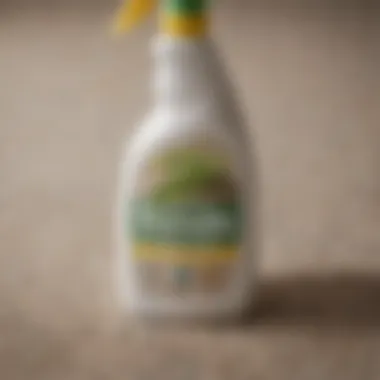
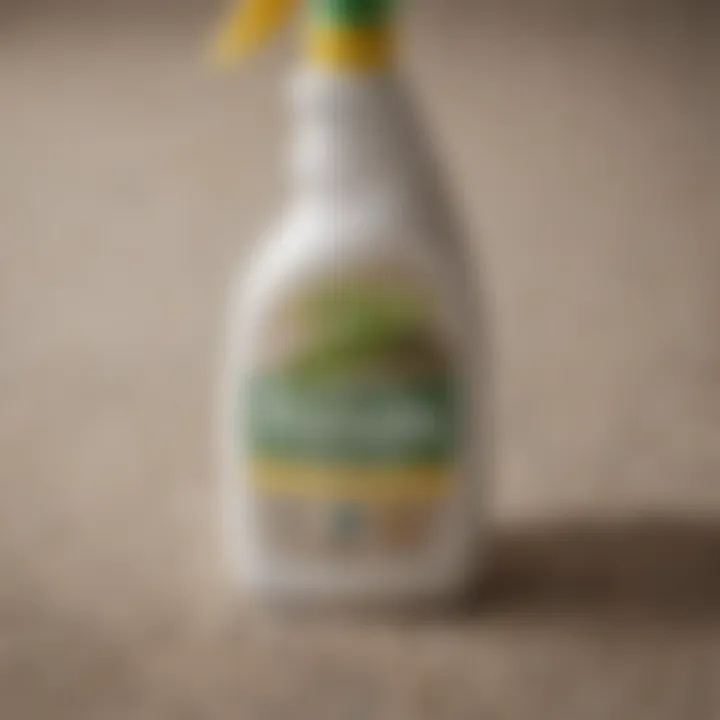
Intro
Maintaining a clean and healthy sleep environment is crucial for overall well-being. A mattress absorbs sweat, dirt, and allergens over time, so regular cleaning is necessary. While mattress cleaning might suggest the use of specialized products, some homeowners consider carpet cleaners as an alternative. This guide discusses the intricacies of employing carpet cleaners on mattresses. It evaluates the effectiveness of this approach, discusses potential risks, and outlines best practices to ensure that your mattress remains in optimal condition.
Understanding Carpet Cleaners
Carpet cleaners are designed specifically for deep-cleaning carpets. They can remove stains, dirt, and odors. However, before applying them to a mattress, it is important to understand their formulation. Many carpet cleaners contain enzymes or detergents that can be harsh.
Selecting the Right Cleaner
When choosing a carpet cleaner for your mattress, keep an eye out for the following:
- Non-toxic Options: Products that are free of harsh chemicals are preferable. This can help avoid any irritation to your skin or respiratory system.
- Stain Removal Properties: Look for cleaners that target specific issues, such as pet stains or odors, depending on your needs.
- Fabric Compatibility: Ensure that the cleaner is suitable for the material of your mattress. Some materials, such as memory foam, require special consideration.
"Choosing the right carpet cleaner is essential. A single misstep can lead to permanent damage to your mattress."
Preparing for Cleaning
Preparation is necessary before using a carpet cleaner on a mattress. Here are essential steps:
- Remove Bedding: Strip the mattress of all bedding and protectors to expose the surface fully.
- Vacuum Thoroughly: Use a vacuum cleaner with an upholstery attachment to lift dust, hair, and debris from the mattress surface. This helps to enhance the effectiveness of the carpet cleaner.
- Spot Test: Always perform a spot test in a hidden area. Apply the carpet cleaner to a small section of the mattress and wait for it to dry. This will show if there is any discoloration or fabric damage.
Cleaning Process
With preparation complete, you can initiate the cleaning process. Here’s how to proceed:
- Apply the Cleaner: Follow the instructions on the product label. Use the cleaner sparingly and avoid over-saturating the mattress.
- Use a Soft Brush: Gently work the cleaner into the fabric with a soft brush. This promotes even distribution without damaging the material.
- Wipe and Rinse: Dampen a clean cloth with water to wipe away the cleaner. Be cautious not to soak the mattress, as excess moisture can lead to mold growth.
- Dry Completely: Leave the mattress in a well-ventilated area. A fan can accelerate the drying process. Ensure it is completely dry before placing any bedding back on.
Epilogue
Using a carpet cleaner on a mattress can be effective, but caution is vital. The selection of the right cleaner, careful preparation, and proper cleaning methods are key to maintaining mattress health. Following these guidelines will help ensure the longevity of your mattress while providing a clean and comfortable sleep environment.
Preface to Mattress Cleaning
Maintaining a clean mattress is a critical, yet often overlooked, aspect of home hygiene. The state of your mattress can significantly affect both health and sleep quality. With time, mattresses can become a breeding ground for dust mites, allergens, and bacteria. Neglecting this can lead to a variety of health issues, from allergies to respiratory problems. Therefore, understanding the process of mattress cleaning, specifically using carpet cleaners, is essential for preserving a healthy sleep environment.
Importance of Mattress Maintenance
Regular mattress maintenance serves several purposes. It improves the lifespan of the mattress, ensuring that it remains supportive and comfortable for an extended period. Additionally, a clean mattress promotes better sleep, which is crucial for overall health. Studies have shown that a clean, well-maintained sleep environment can lead to better rest, enhanced focus during waking hours, and improved emotional well-being.
Failing to clean the mattress can lead to lingering odors and unsightly stains. These problems not only detract from the aesthetics of the bedroom but can also cause discomfort during sleep. Moreover, poor mattress hygiene may trap moisture and heat, creating an ideal environment for mold and bacteria to thrive. Therefore, prioritizing mattress maintenance is a necessary task for any conscientious homeowner.
Common Sources of Mattress Stains and Odors
Stains and odors on mattresses often arise from various sources, many of which may be surprising. Common culprits include:
- Body Fluids: Sweat, saliva, and urine can seep into the mattress, leaving behind stains and odors.
- Food and Drinks: Accidental spills from late-night snacks or beverages can result in both odor and stain issues.
- Pets: Pets may leave behind dirt, hair, and even accidents, contributing to your mattress's condition.
- Dust Mites: These microscopic creatures thrive in mattresses, feeding on dead skin cells, and can contribute to allergic reactions.
Recognizing these sources enables homeowners to take preventive measures, thus enhancing their mattress's cleanliness and longevity. It also highlights the significance of using appropriate cleaning methods to address specific stains and odors effectively.
Understanding Carpet Cleaners
Understanding the various types of carpet cleaners available is essential for effectively cleaning a mattress. Each type of cleaner has distinct characteristics that influence how well it works on different fabric materials. Knowing these differences enables homeowners and others interested in maintaining a clean sleep environment to select the most suitable product. This section will explore the specific types of carpet cleaners, their chemical makeup, and considerations for safe use on mattresses.
Types of Carpet Cleaners
When it comes to carpet cleaners, three primary types stand out: foam cleaners, liquid cleaners, and steam cleaners. Each of these types interacts uniquely with different mattress materials and has varying impacts on cleaning effectiveness and fabric integrity.
Foam Cleaners
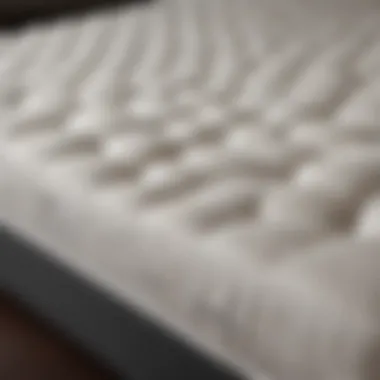
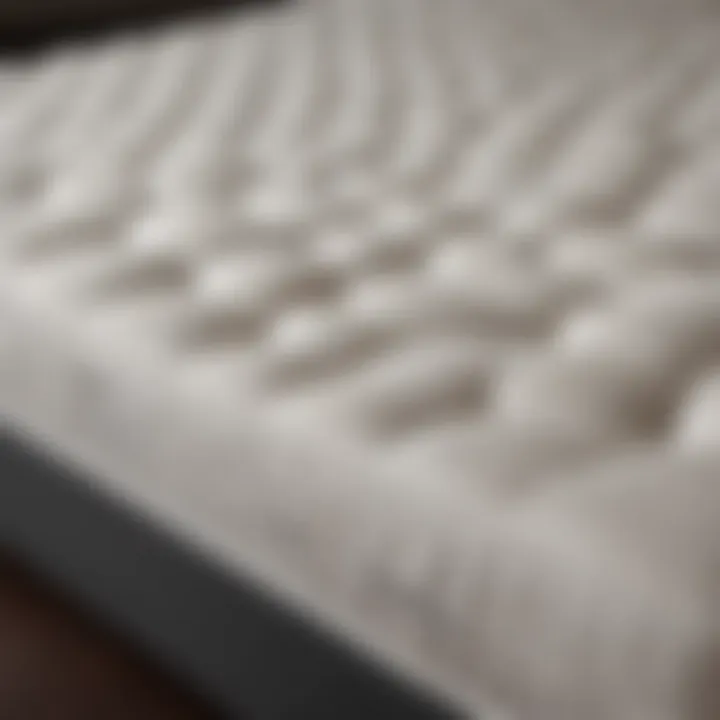
Foam cleaners are often praised for their ease of application. They come in an aerosol can, allowing users to spray the foam directly onto the surface of the mattress. This cleaning method is effective for spot cleaning and tackling surface-level dirt and stains. One key characteristic of foam cleaners is their thick consistency, which allows the cleaner to cling to the fabric longer.
The benefit of using foam cleaners lies in their ability to lift stains without excessive moisture. The unique feature of this type lies in its fast-drying formula that reduces the risk of mildew, an important consideration for mattress care. However, users should keep in mind that foam cleaners can sometimes leave a residue, requiring a thorough rinse with a clean cloth after application.
Liquid Cleaners
Liquid cleaners provide a different approach to cleaning a mattress. Typically, they are formulated for both general cleaning and stain removal. This type of cleaner is extremely versatile, suitable for a variety of carpets and upholstery. A distinctive feature of liquid cleaners is their ability to penetrate deep into the fabric, which can be effective for older stains.
An advantage of liquid cleaners is that they can be diluted to adjust to cleaning needs. However, over-application may lead to excessive moisture, risking the mattress’s integrity. Consequently, it’s crucial to use these cleaners sparingly and ensure proper drying afterward to prevent issues like mold or dust mites.
Steam Cleaners
Steam cleaners represent a more advanced method of cleaning. They utilize hot steam to remove dirt and bacteria without the need for harsh chemicals. Steam cleaning is highly effective for sanitizing. The key characteristic of steam cleaners is their environmentally friendly cleaning power, making them an excellent fit for health-conscious consumers.
The unique feature of steam cleaners is their ability to reach high temperatures, which can eliminate allergens and dust mites effectively. However, users must be cautious as excessive steam can damage certain mattress materials like memory foam. Proper technique and adherence to the manufacturer's guidelines are vital to maintain the mattress in good condition while using steam.
Chemical Composition of Carpet Cleaners
The chemical makeup of carpet cleaners varies widely. Understanding these compositions is important for both effectiveness and safety. Most carpet cleaners contain a mix of surfactants, solvents, and sometimes enzymes. Surfactants work to break down dirt and stains, while enzymes can help target organic materials such as food or bodily fluids.
It’s important to note the presence of solvents, which can be harmful if not used correctly. Some individuals may experience sensitivity or allergic reactions to specific chemicals present in cleaners. Therefore, it’s advisable to opt for hypoallergenic options when cleaning mattresses. Regularly reviewing ingredients also helps maintain a safe environment, particularly in households with children or pets.
In summary, by understanding the different types of carpet cleaners and their chemical composition, individuals can make informed decisions. Assessing these factors not only ensures effective cleaning but also supports a long-lasting, healthy mattress.
Evaluating the Mattress Material
Evaluating the material of your mattress is a critical step when considering the use of carpet cleaners. Not all mattress materials respond the same way to cleaning agents, and understanding these differences can significantly influence both the cleaning process and the endurance of your mattress. Each material has its own properties, which can affect moisture absorption, the risk of damage, and overall cleaning effectiveness. Knowing what type of mattress you have guides you toward the right cleaning method, ensuring that you do not inadvertently harm the fabric while seeking to refresh it.
Common Mattress Materials
Innerspring
Innerspring mattresses are among the most traditional types available. They consist of a system of coils that provide support and bounce. The primary characteristic of these mattresses is their structure, made up of interconnected coils. This design offers excellent support and is often favored by those who prefer a firmer sleeping surface.
When it comes to cleaning, innerspring mattresses can present unique challenges. These mattresses are typically encased in fabric that can be susceptible to water damage. It’s important to apply carpet cleaner carefully, avoiding oversaturation that could lead to rust on the coils or mold growth. Overall, they are a popular choice due to their breathability and durability, but extra caution is necessary during cleaning.
Memory Foam
Memory foam mattresses offer a different experience. They are popular for their ability to conform to the body's shape, providing personalized support. The key characteristic of memory foam is its viscoelasticity, which allows it to change shape when pressure is applied. This adaptability makes it a comfortable option for many.
While cleaning memory foam, the unique structure of the material requires special attention. Excess moisture can be detrimental, as it could compromise the foam's integrity. Generally, using a light spray of a carpet cleaner is advised, avoiding heavy soaking. These mattresses are beneficial for comfort but may be tricky to clean without risking damage.
Latex
Latex mattresses are celebrated for their resilience and eco-friendly properties. They can come in natural or synthetic varieties, but the natural latex model is particularly popular among environmentally conscious consumers. The main characteristic of latex is its durability and resistance to mold and dust mites, making it a good choice for those with allergies.
For cleaning, latex mattresses can handle some moisture well but should not be oversaturated. Using carpet cleaner should be done with care, as harsh chemicals may break down the latex over time. These mattresses often provide a supportive feel while being easier to maintain, provided that the cleaning solution is compatible with the material.
Impact on Cleaning Method Selection
The type of mattress material directly affects the method you select for cleaning. Each material has unique properties that dictate how it reacts with cleaning agents. If you do not choose an appropriate method, you may damage the mattress.
- For innerspring, focus on thorough vacuuming and spot cleaning. Avoid soaking the mattress.
- For memory foam, use foam cleaners sparingly to prevent moisture damage.
- For latex, opt for gentle solutions and test in an inconspicuous area first to ensure compatibility.
Selecting the correct cleaning method based on your mattress material is essential for maintaining its durability and comfort.
Understanding mattress materials not only helps in proper cleaning techniques but also assists homeowners in predicting the lifespan and maintenance of their mattress. By being informed about these materials, you can minimize the risk of damage and enhance your sleep environment.
Preparing for the Cleaning Process
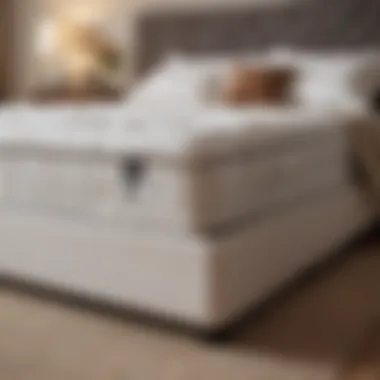
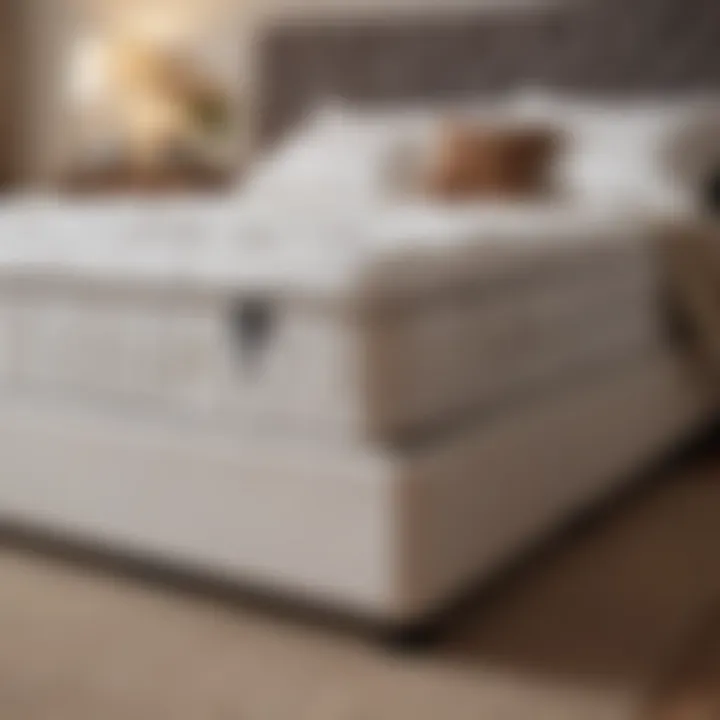
Preparing for the cleaning process is critical in maintaining the integrity and cleanliness of your mattress. A well-prepared approach ensures that you have all the necessary tools and supplies at your disposal, allowing for an efficient and effective cleaning experience. Skipping preparation can lead to missing items, prolonging cleaning time, or using improper techniques that may damage the mattress.
This section emphasizes various elements that contribute to a successful cleaning session. Having the right supplies does not only make the task easier but can also improve the overall effectiveness of the cleaning technique. Moreover, understanding how to use each item effectively will help in achieving the desired cleanliness and hygiene standards.
Gathering Necessary Supplies
Before starting the cleaning process, gathering necessary supplies is essential. This preparation creates a systematic approach to the task, ensuring nothing important is overlooked.
Vacuum Cleaner
The vacuum cleaner plays an integral role in the cleaning process. Its primary function is to remove dust, dirt, and allergens from the surface of the mattress, preparing it for deeper cleaning. A vacuum cleaner with a HEPA filter can capture fine particles that may not be visible, making it a beneficial choice for maintaining mattress hygiene. An important feature of many vacuum cleaners is their attachment options, which allow for cleaning crevices and edges effectively.
However, uncareful usage may damage delicate fabrics, so attention to technique is vital. Regularly maintaining the vacuum cleaner itself, such as cleaning or replacing filters, is also critical for optimal performance.
Carpet Cleaner
Selecting the right carpet cleaner is crucial for effectively treating stains and odors on the mattress. These cleaners are specifically designed to break down soils and grime. The key characteristic of a quality carpet cleaner is its formulation; it is often more powerful than general cleaning agents, allowing for a thorough clean without leaving residues.
Among various options, some carpet cleaners also provide targeted solutions for specific types of stains, making them popular in household cleaning. Nevertheless, it is important to read the labels carefully, as improper usage of certain cleaners may lead to discoloration or fabric damage.
Clean Cloths
Clean cloths are a simple yet effective supply that should not be overlooked. They assist in blotting excess moisture after applying a carpet cleaner. A good choice of clean cloths is those made from microfiber, as they are absorbent and gentler on fabric surfaces.
One of the unique benefits of using clean cloths is that they can be reused after washing, making them an environmentally friendly option. However, if not properly laundered, they might inadvertently transfer dirt back to the mattress, emphasizing the need for a thorough cleanup process.
Pre-Cleaning Tips
Effective cleaning involves more than just the supplies; systematic pre-cleaning measures can enhance outcomes. Start by removing all bedding, pillows, and any other items from the mattress. This allows better access and avoids contamination during the cleaning process.
Another tip is to inspect the mattress for any stains or problem areas before starting. Knowing what to address will help in applying the correct cleaning strategies. Additionally, airing out the mattress can help alleviate odors, making the cleaning process even more effective.
Step-by-Step Cleaning Process
In order to effectively clean a mattress using a carpet cleaner, it is important to follow a systematic approach. This section lays out the steps involved in the cleaning process, emphasizing clarity and thoroughness. Each step has significance in ensuring that the mattress is not only clean but also free from damage, be it chemical sensitivity or fabric deterioration. Here are the three main stages:
Vacuuming the Mattress
The vacuuming step is crucial and serves as the initial barrier against the buildup of dust and debris. A thorough vacuuming does two things: it removes surface particles and it preps the mattress. Use a vacuum cleaner with an upholstery attachment to avoid damaging the fabric. Make sure to cover all areas, including the sides and corners. This prepares the surface for the application of the carpet cleaner and ensures deeper cleaning later on.
Some key points while vacuuming include:
- Utilizing the right vacuum attachment: This prevents snags and tears that can occur with more aggressive tools.
- Pay attention to seams and folds: Dust and allergens accumulate here and often go unnoticed.
As you vacuum, take your time to ensure no dirt is left behind. This step sets the foundation for successful cleaning.
Applying Carpet Cleaner
Applying the carpet cleaner correctly is essential for effectiveness. Choose a carpet cleaner that is suitable for the mattress material. Always test in a small, inconspicuous area if unsure about compatibility. Apply the solution evenly, using a spray bottle or a sponge, depending on the product instructions. Do not overly saturate the mattress, as too much moisture can lead to mold growth.
Further, consider the following tips while applying the cleaner:
- Follow manufacturer's instructions: Adhere to the recommended dilution and application technique.
- Work in sections: This ensures that no area is neglected and allows for more control.
- Use soft strokes: This decreases the likelihood of fabric damage.
Being mindful during this step can help preserve the lifespan of your mattress while achieving optimal cleanliness.
Rinsing and Drying the Mattress
After applying the cleaner, rinsing becomes a critical factor. This stage ensures that no residue from the cleaning products remains on the mattress. Use a clean, damp cloth to gently wipe down the surface. For those using steam cleaners, be sure to follow the specific instructions related to your machine.
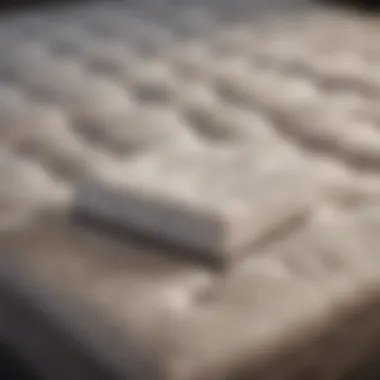
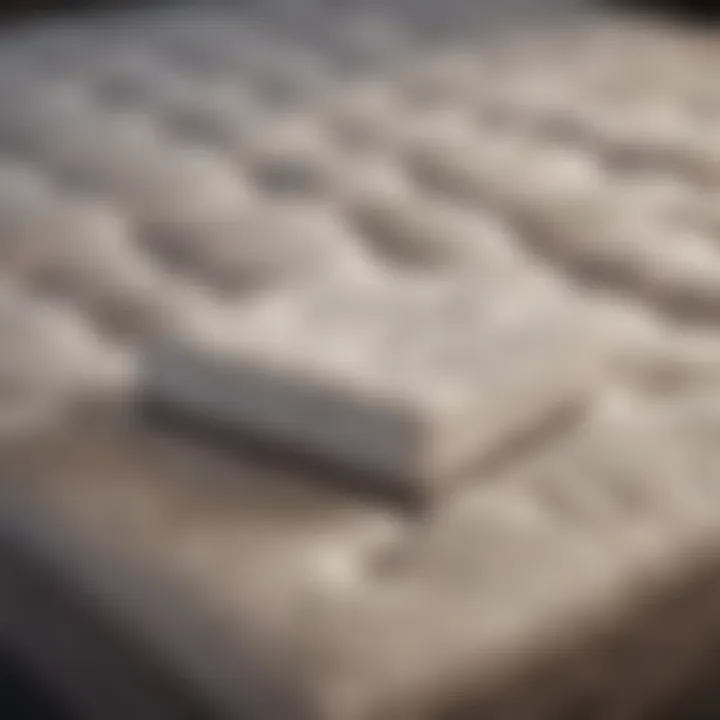
Once rinsing is complete, drying the mattress is equally important. Here’s how:
- Air dry if possible: Place the mattress in a well-ventilated area. Sunlight can also help kill bacteria.
- Avoid using heat sources: Do not apply direct heat, such as hair dryers or heaters, as they can damage the mattress.
Ensure that the mattress is thoroughly dried before putting it back on the bed frame. This helps prevent any moisture-related problems and keeps the sleeping area hygienic.
In summary, the three steps—vacuuming, applying the carpet cleaner, and rinsing—work in tandem to achieve a cleaner and healthier sleep environment. Follow these carefully to maintain the integrity of your mattress.
Overall, adhering to the proper process and taking care not to compromise the materials will maximize the efficiency of carpet cleaning on your mattress.
Post-Cleaning Considerations
Post-cleaning considerations are crucial in ensuring that the mattress remains in good condition after using a carpet cleaner. Touching on several points can optimize long-term cleanliness and durability. Failing to consider these elements might lead to unnecessary wear, stains reappearing, or the introduction of harmful allergens into the sleep environment. Thus, paying attention to the following subsections is vital for maintaining a healthy mattress.
Assessing the Cleanliness of the Mattress
After the cleaning process is completed, it’s important to assess the cleanliness of the mattress. This assessment determines whether additional cleaning is necessarry. Begin by checking for any remaining stains or odors. A thorough visual inspection should suffice. Look closely at the seams and corners, as these areas often trap dirt and grime. Additionally, performing a light sniff test can help determine if the mattress has retained any odors.
If stains or odors persist, consider repeating the cleaning proces but with adjustments in your technique or cleaning solutions used. Look to see if the color or texture of the fabric has changed post-cleaning. If there are signs of fading or damage, then it's possible the cleaner utilized was too harsh. Optimal cleanliness should equate to a fresher smell and an appealing appearance without visible marks.
Evaluating the mattress can extend its lifespan and ensure it contributes positively to your sleep experience.
Maintaining Mattress Hygiene
Maintaining hygiene involves ongoing efforts beyond just cleaning the mattress occasionally. Regular practices can help ensure a constantly clean sleep surface and prevent buildup of allergens or bacteria. A few strategies to keep in mind include:
- Investing in a mattress protector: This helps in safeguarding your mattress against spills and stains. Many protectors come with features that resist dust mites and other allergens.
- Regularly vacuuming: Make a practice of vacuuming the mattress every month. This will help in removing dust and any surface debris. A vacuum attachment that is specifically designed for this task can be particularly effective.
- Air it out: Periodically, allow the mattress to get fresh air. This can be done by removing bedding and letting the surface breath for a few hours, ideally in a room with good ventilation.
- Spot cleaning: For minor spills or stains, promptly tackle them with a gentle mixture of water and a small amount of detergent. Blot rather than rub to avoid damaging the fabric.
By adopting these habits into your routine, you can enhance mattress hygiene. This approach not only promotes better sleep but also ensures that the cleaning process you have undertaken does not go to waste.
Potential Risks of Using Carpet Cleaners
When considering the use of carpet cleaners on mattresses, it is essential to understand the potential risks involved. Although the effectiveness of these products can make them appealing for cleaning, there are significant considerations that homeowners must address. These risks can affect not only the cleanliness of the mattress but also the overall health of the users and the durability of the mattress itself. Careful evaluation of these risks can mitigate problems and maintain a safe and clean sleep environment.
Chemical Sensitivity
One of the primary concerns when using carpet cleaners is chemical sensitivity. Many carpet cleaners contain strong chemicals that can provoke allergic reactions or other sensitivities. These products may emit volatile organic compounds (VOCs), which can be harmful when inhaled, especially in confined spaces like bedrooms. Symptoms of chemical sensitivity can vary from mild irritation to more severe reactions, such as headaches, respiratory issues, or skin rashes. Sensitive individuals, including children and people with existing health conditions, may experience heightened responses to these chemicals.
It is advisable to choose carpet cleaners that have fewer harsh chemicals or are labeled as non-toxic. Always check the product labels and consider performing a patch test on a small, inconspicuous area of the mattress to determine any adverse reactions before widespread application. Communication with other household members about any known sensitivities can also be beneficial in minimizing exposure to harmful substances.
Damage to Mattress Fabric
Another risk associated with the use of carpet cleaners is potential damage to the mattress fabric. Different mattress materials react uniquely to various cleaning agents. For example, a cleaner that works effectively on synthetic fibers may not be suitable for natural materials like cotton or latex. Using the wrong cleaner can lead to discoloration, weakening of the fabric, or even tearing.
To avoid fabric damage, it is crucial to evaluate the specific composition of your mattress. Check the manufacturer’s guidelines for cleaning and ensure that the selected carpet cleaner is compatible with the mattress fabric. If unsure, opting for a cleaner designed specifically for mattress fabrics can be a safer choice. Additionally, following the manufacturer's cleaning instructions can significantly reduce the risk of damage.
Understanding these potential risks allows for a more informed approach to mattress cleaning, protecting both the health of users and the integrity of the mattress.
Culmination
The conclusion of this article encapsulates the vital aspects of using carpet cleaners on mattresses. It emphasizes the need for a clean sleep environment while considering the type of materials that comprise your mattress. Understanding the right cleaning methods can protect the integrity of your investment in comfort and health.
Summary of Best Practices
To ensure optimal outcomes when using carpet cleaner on a mattress, adhere to these best practices:
- Choose the Right Cleaner: Select a carpet cleaner compatible with your mattress material. For instance, foam cleaners may be suitable for certain fabrics, while steam cleaners may be better for others.
- Test on a Small Area: Before applying the cleaner extensively, test it on a inconspicuous part of the mattress. This will help to identify any adverse reactions.
- Work in Sections: Break up the mattress into manageable sections. Clean each section thoroughly to ensure no area is missed.
- Use Proper Technique: Follow the manufacturer’s instructions regarding application methods and timing. This will maximize effectiveness while minimizing potential damage.
"Cleaning your mattress effectively can extend its lifespan and improve overall sleep hygiene."
Recommendations for Future Maintenance
Maintaining a mattress requires regular upkeep to prevent stains and odors:
- Regular Vacuuming: Make vacuuming a routine task. Doing so can remove debris, allergens, and dust mites that accumulate over time.
- Utilize Mattress Protectors: Consider using a high-quality mattress protector. It can shield your mattress from spills and accidents, prolonging its life.
- Air Out the Mattress: Periodically take the mattress outside on a dry, sunny day. This can help eliminate moisture and odors.
- Clean Spills Promptly: Address any spills or stains immediately. The sooner you treat them, the less likely they will set in.















